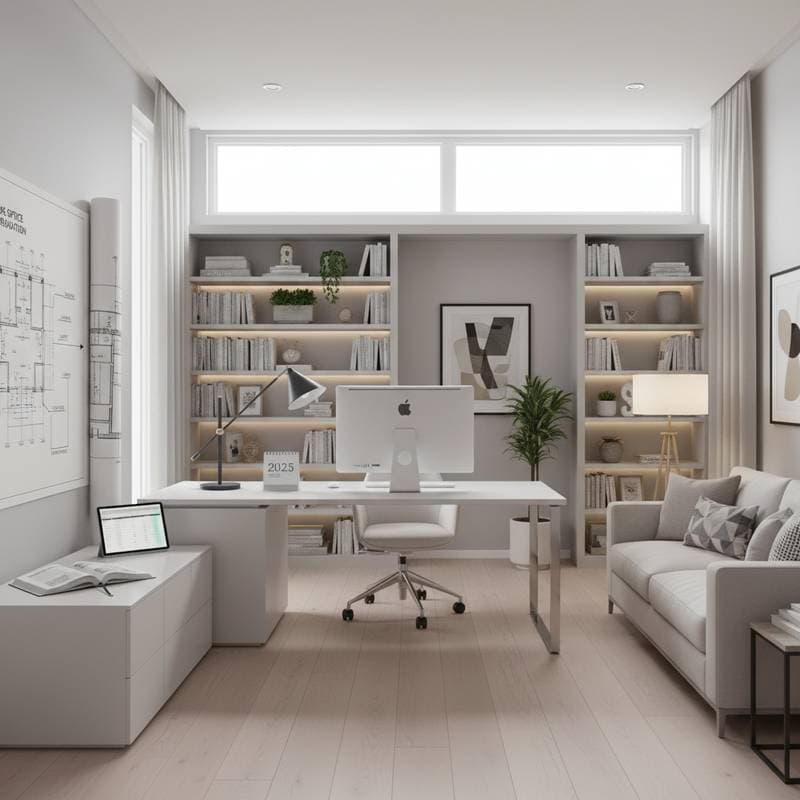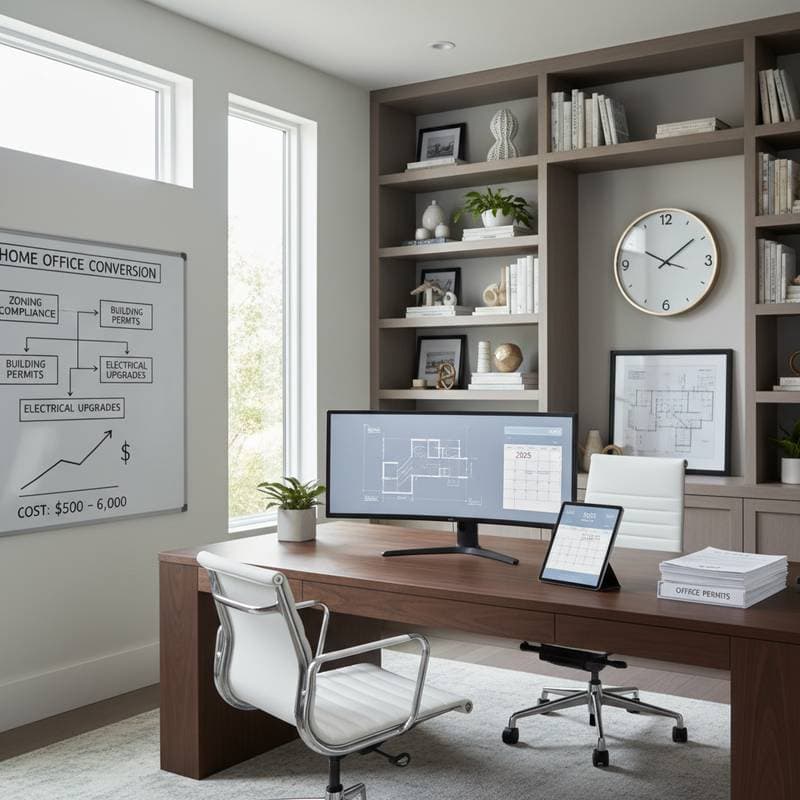Layouts That Foster Multigenerational Harmony
Designing Homes That Bring Generations Together
A well-planned multigenerational home strikes a balance between connection and independence. Families who choose this living arrangement discover that the right layout reduces daily friction and strengthens relationships. Professional designers estimate that remodeling for a multigenerational layout costs between $55,000 and $180,000, with most homeowners investing about $110,000 for a full conversion that includes separate living zones and shared spaces.
Three main factors influence the total cost: the extent of structural changes, the inclusion of accessibility features, and the quality of materials. Regional labor rates and local building codes also affect pricing. Data from the National Association of Home Builders indicates that a properly designed multigenerational layout can increase property value by up to 15 percent through improved functionality and broader buyer appeal. Thoughtful design planning ensures that every generation enjoys privacy, comfort, and shared experiences under one roof.
Detailed Cost Breakdown
Core Pricing Structure
The cost of creating a multigenerational layout varies widely based on scope. A light renovation that adds a secondary suite or mother-in-law unit starts around $45,000. Mid-range conversions that include two kitchens, accessibility upgrades, and new plumbing range from $90,000 to $130,000. High-end projects that involve full additions or accessory dwelling units typically reach $150,000 to $200,000.
Minimum service charges for design consultations average $2,000, while architectural planning packages range between $3 and $7 per square foot. At the 25th percentile, small-scale conversions average $65,000. The 50th percentile, representing most typical projects, lands near $110,000. At the 75th percentile, large dual-living layouts reach $165,000 or more.
Size and Scope Factors
Size directly shapes cost. Each additional 100 square feet typically adds $7,000 to $9,000 to the total. Homeowners converting an unfinished basement into a private suite can expect costs near $80 per square foot. Full additions that expand the main footprint average $220 per square foot according to Remodeling Magazine benchmarks.
Real examples illustrate these ranges. A 500-square-foot accessory dwelling unit with basic finishes might total $95,000. A 900-square-foot, two-bedroom addition with a kitchenette and accessible bathroom often exceeds $180,000. These figures include labor, permits, and standard materials.
Material and Quality Tiers
Entry-level materials include basic vinyl flooring, laminate countertops, and standard fixtures. These options keep costs near $70 per square foot but may reduce long-term durability.
Mid-range selections, such as quartz countertops, engineered wood flooring, and noise-reduction insulation, typically add 15 to 25 percent to the budget. Brands like Mohawk and Delta provide a good balance between quality and value.
Premium materials, such as solid hardwood, custom cabinetry, and energy-efficient HVAC systems, increase costs to $250 per square foot or more. Homeowners often justify this upgrade through energy savings and higher resale value. Many premium installations come with warranties lasting over ten years, which boosts confidence and performance longevity.
Complexity Variables
Accessibility upgrades, such as wider doorways and roll-in showers, can raise costs by 10 to 20 percent. Homes with sloped lots or older electrical systems often require additional engineering. Compliance with local codes for accessory dwelling unit conversions may add $5,000 to $8,000 for permits and inspections. Geographic multipliers also apply. Urban areas like San Francisco or New York may see 30 percent higher labor costs compared to smaller cities.
A case study from a home improvement discussion revealed that a family spent $125,000 upgrading a garage into a private apartment. This example highlights how existing structure quality and city regulations influence the final budget.
Service Types and Comprehensive Pricing
Standard Multigenerational Conversion
A standard package focuses on creating a semi-private living area with a bedroom, small bathroom, and kitchenette. Typical tasks include:
- Framing and drywall installation
- Electrical and plumbing upgrades
- Flooring and lighting
- Basic kitchen and bath fixtures
Labor usually takes six to eight weeks, with costs between $55,000 and $95,000. This option suits families with one additional adult or an older relative seeking proximity without full separation.
Premium Dual-Living Layouts
A premium package expands the concept with independent entrances, full kitchens, and acoustic insulation. It often includes:
- Dedicated HVAC systems
- Soundproof walls
- Custom cabinetry
- High-end finishes and smart home integration
Costs range from $120,000 to $180,000, representing a 25 to 40 percent premium over standard conversions. The return on investment often appears through increased property value and rental potential. Homeowners report payback periods of five to eight years when renting one portion of the home.
Add-On Options and Bundles
Homeowners can add services such as:
| Add-On Service | Typical Cost | Bundle Savings | Notes |
|---|---|---|---|
| Accessibility upgrades | $8,000 - $15,000 | 10% when bundled | Ideal for aging-in-place planning |
| Separate entrance construction | $5,000 - $12,000 | 5% | Adds independence and privacy |
| Sound insulation | $4,000 - $9,000 | 7% | Reduces noise transfer |
| Shared outdoor patio | $6,000 - $10,000 | 8% | Encourages intergenerational gatherings |
Bundling related services often reduces total costs by 10 to 15 percent.
Professional vs. DIY Conversion
DIY Cost Breakdown
A DIY multigenerational renovation can appear affordable at first glance but involves hidden expenses. Materials like framing lumber, drywall, and fixtures can total $25,000 to $40,000. Tools such as saws, drills, and tile cutters add another $2,000 if purchased or $500 if rented. Learning curves for plumbing and electrical work extend project timelines substantially.
A realistic DIY range is $35,000 to $55,000, excluding permits and inspection fees. Mistakes in waterproofing or wiring often lead to costly rework. Opportunity costs also rise when family members spend months managing construction instead of working or caring for relatives.
Professional Advantages
Hiring licensed contractors brings faster completion and higher-quality results. Teams with insurance and warranties protect homeowners from liability. Access to advanced tools and industry discounts can offset some cost differences. Professionals also understand zoning laws and can help secure approvals efficiently.
The expertise premium typically adds 20 to 25 percent to labor costs but saves significant time. A break-even analysis often shows that professional work yields better long-term savings through durability and compliance.
Smart Strategies for Cost Savings
Timing and Scheduling
Booking contractors during off-peak seasons can reduce quotes by up to 12 percent. Mid-week scheduling may cut labor rates slightly since crews fill open calendar slots. Avoiding major holidays prevents delays and keeps prices steady.
Smart Shopping and Negotiation
Comparing at least three quotes helps identify fair pricing and negotiation leverage. Payment timing discounts are often available for upfront deposits. Sourcing materials directly from suppliers or using reclaimed products can reduce material costs by 10 to 20 percent while maintaining quality.
Preparation and Communication
Homeowners can lower costs by clearing spaces, removing old fixtures, and finalizing design decisions before work begins. Each day saved in labor can reduce the total bill by $400 to $600. Clear communication with project managers ensures no misunderstandings that lead to change orders.
Building Enduring Family Connections
Multigenerational home layouts offer more than cost considerations; they create spaces that nurture family bonds for years to come. By prioritizing thoughtful design, families achieve privacy alongside shared moments that enhance daily life. These investments not only boost property value but also foster lasting harmony and support across generations.



